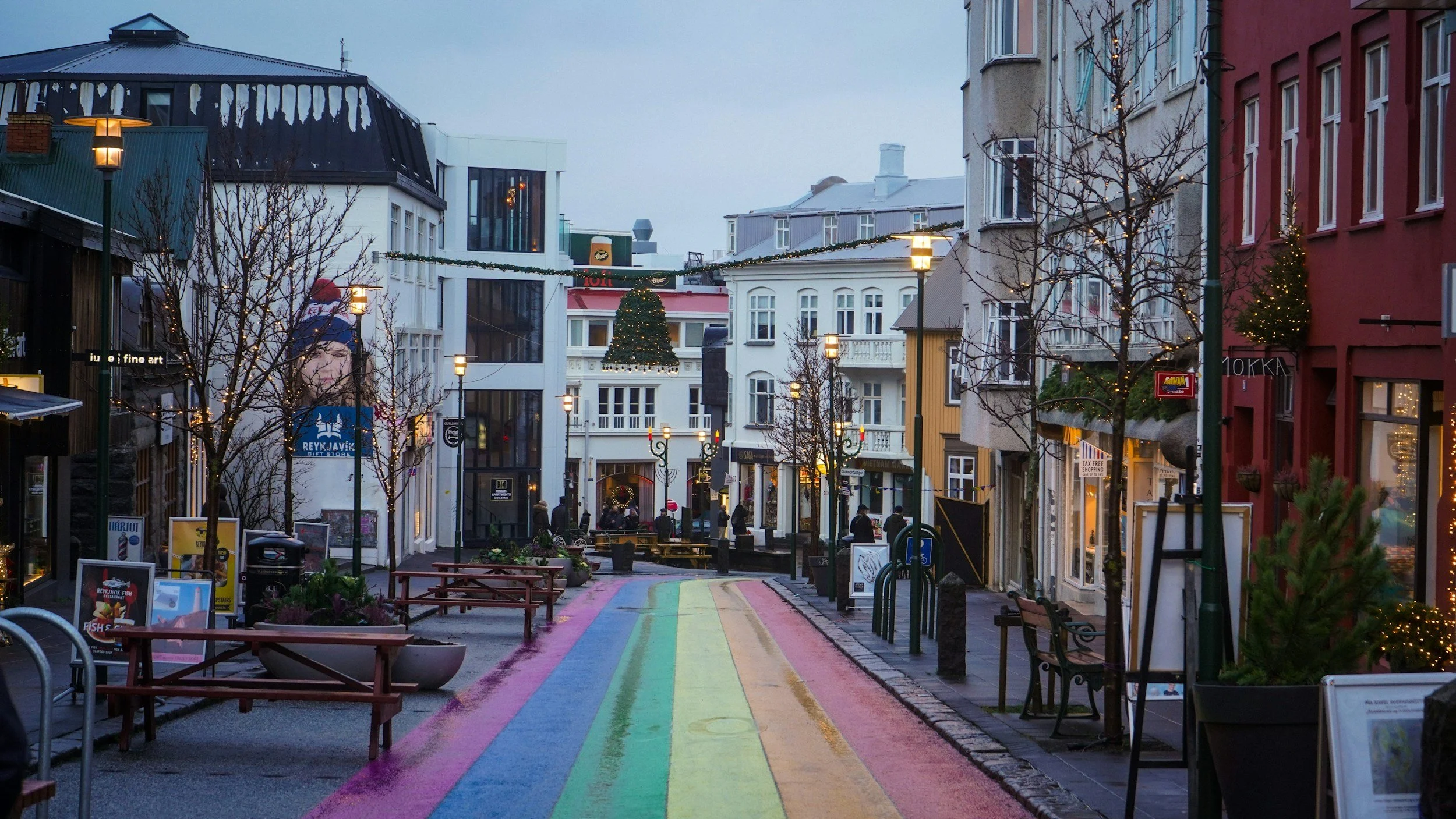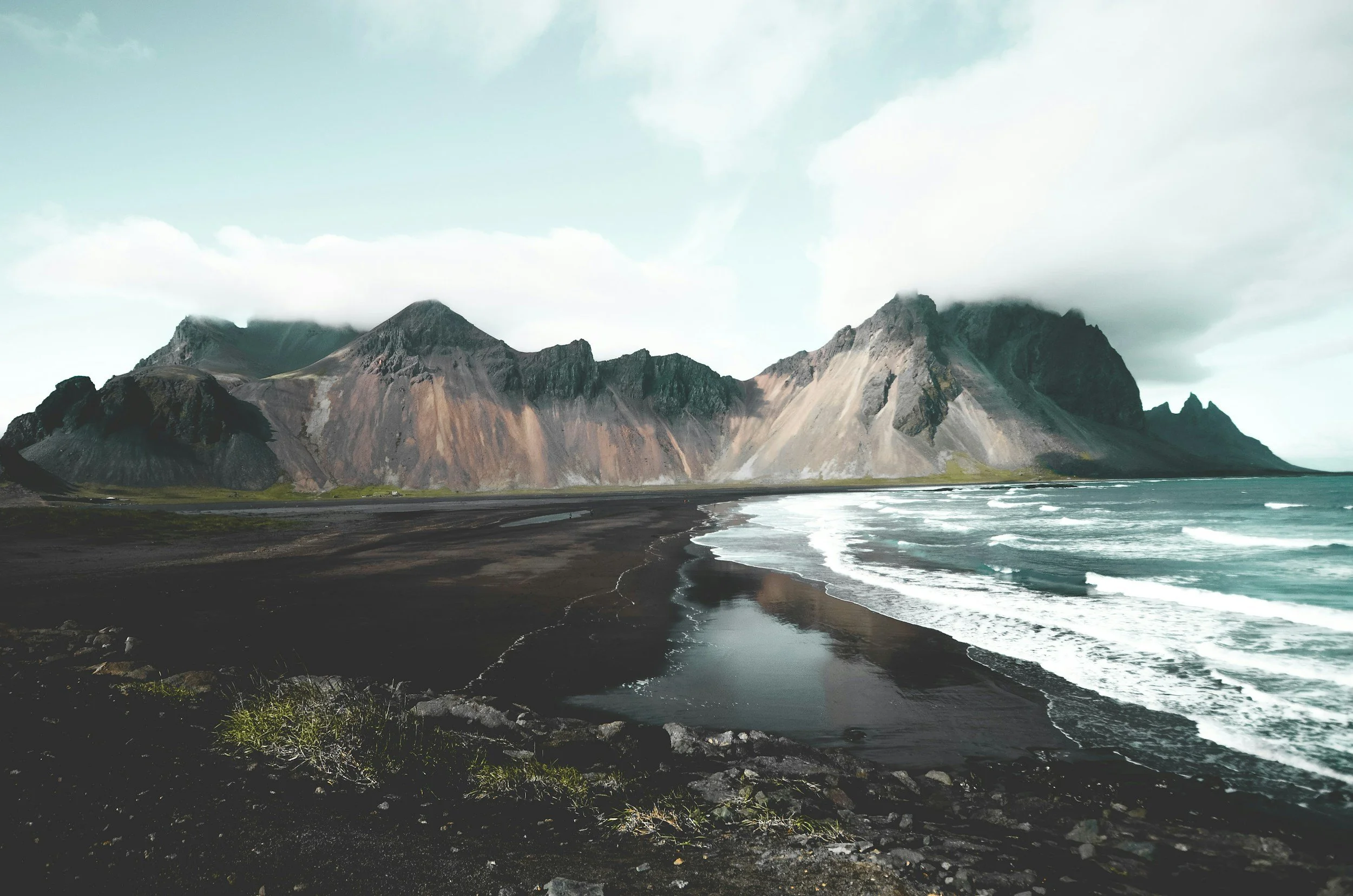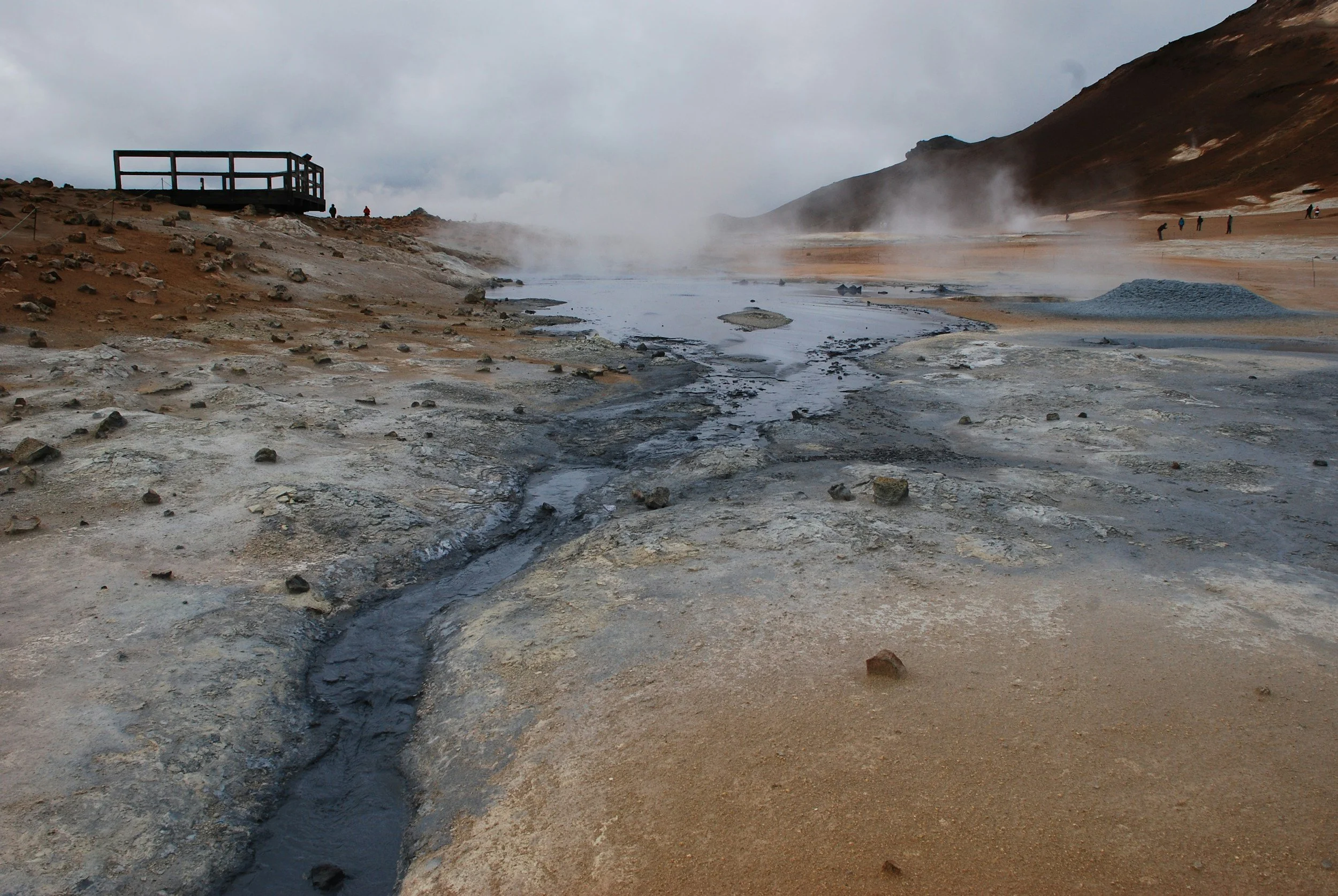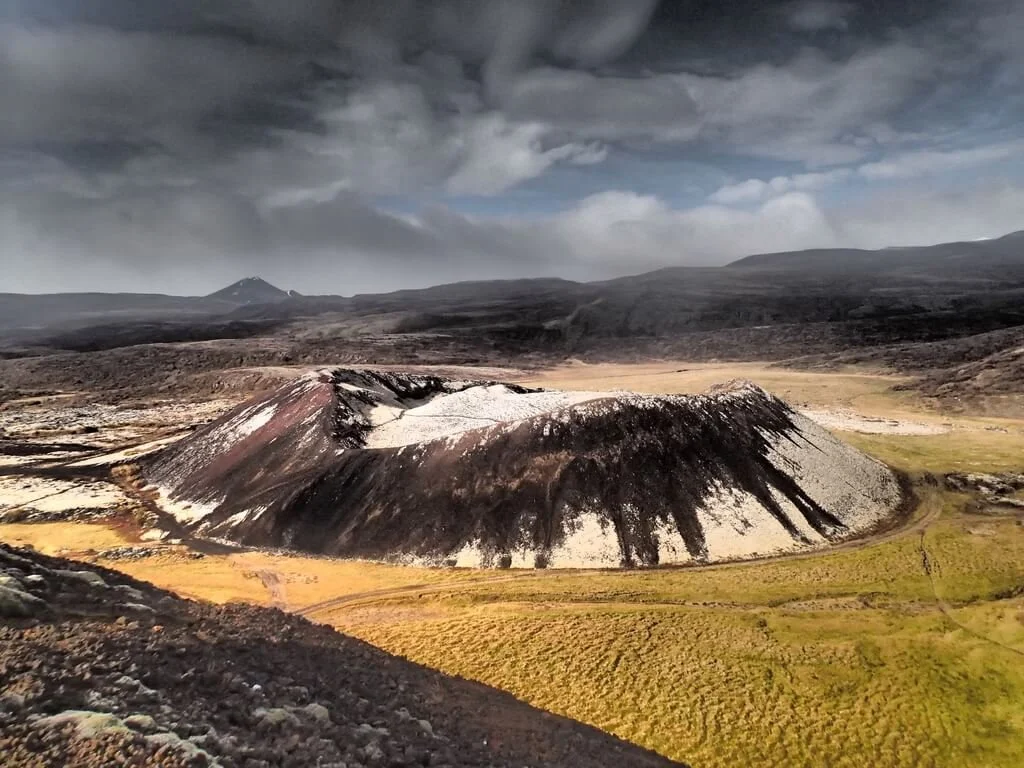7-Day Iceland Ring Road Itinerary (Childfree & Budget-Friendly)
Iceland had been calling to us for years. We were instantly drawn to its rugged landscapes, moody weather, and quiet solitude and couldn’t get it out of our minds. After what felt like years of planning, we finally made it happen.
We were in our early 30s, running on granola bars, ramen noodles, and way too much ambition. This wasn’t a luxe getaway—it was a low-budget, pack-your-own-snacks kind of trip. We didn’t have much to spend, but we were determined to see as much of Iceland as humanly possible in one week.
No kids. No rigid plans. Just us, our comically under-equipped VW Golf, and a lot of weather.
This post is our real 7-day Iceland itinerary—complete with the stops, the lessons, and a glimpse into what it’s like to take on this wild country childfree. It’s fast-paced, but totally doable if you’ve got the stamina (and a decent rain jacket).
Table of Contents Show
Day 1: Arrival + Reykjavík
KEF Airport → Reykjavík
After a long red-eye flight and very little sleep, we landed at Keflavík International Airport, picked up our rental car, and sleepily made the 50-minute drive to Reykjavík. When we arrived, we immediately hit the streets and began exploring because 1) We couldn’t check into our hotel until the afternoon and 2) The jet lag was so real and we knew we’d be toast if we stopped moving. We wandered wherever we felt like—no agenda, no schedules, just chasing warm drinks and cozy corners to warm up in. Reykjavík is perfect when you can travel light, both literally and figuratively.
Hallgrímskirkja: One of the most iconic landmarks in Reykjavík, this towering Lutheran church is inspired by Iceland’s basalt columns. Visitors can take an elevator to the top for sweeping views of the city and surrounding mountains. We were stunned by its unique architecture!
Sólfar (Sun Voyager): A striking steel sculpture located on the waterfront, designed to represent a dreamboat and an ode to the sun. It's a popular photo stop, especially at sunrise or sunset.
Harpa Concert Hall: A modern architectural gem made of geometric glass panels that reflect the changing light. It hosts concerts and events, but is also open to the public for exploring and enjoying the harbor views. We marveled at the unique design of the interior staircases.
Laugavegur Street: The main shopping and dining street in Reykjavík, lined with boutiques, souvenir shops, cafes, and bars. It’s the best place to get a feel for the city’s culture and do some people-watching.
Skólavörðustígur (Rainbow Street): One of Reykjavík’s most photographed spots—a vibrant, rainbow-painted road leading up to Hallgrímskirkja. It’s lined with shops and cafes, making it a fun (and colorful) place to stroll or snap a few photos.
Skólavörðustígur (Rainbow Street)—A celebration of Reykjavík Pride.
Day 2: Golden Circle + Hella
Reykjavík → Þingvellir → Haukadalur → Gullfoss → Hella
Early the next morning, we enjoyed a quick European-style breakfast at our hotel and then hit the road toward the first stop on our Iceland Ring Road itinerary: The Golden Circle. The Golden Circle is a popular 300-kilometer (190-mile) loop that includes Þingvellir National Park, Haukadalur Geothermal Area, and Gullfoss Waterfall. It’s the most visited part of Iceland for a reason—the natural beauty is simply unmatched. The sights are stunning, but we were not prepared for the sheer number of tour buses and selfie sticks we encountered.
Þingvellir National Park: A UNESCO World Heritage Site where the North American and Eurasian tectonic plates meet. It’s also the historic site of Iceland’s first parliament, and features dramatic cliffs, waterfalls, and walking trails. My husband braved the Silfra fissure with a snorkel while I took a scenic drive. Both were stunning!
Haukadalur Geothermal Area: A geothermal valley home to Iceland’s most famous geysers, including Strokkur, which erupts every 5–10 minutes. The area also features bubbling mud pots and steaming vents surrounded by walking paths.
Gullfoss Waterfall: One of Iceland’s most iconic and powerful waterfalls, Gullfoss plunges in two dramatic stages into a rugged canyon. There are multiple viewing platforms, and on sunny days you’ll often catch rainbows in the mist.
Hella: Our home for the night. One of our favorite affordable eats from the trip was the Icelandic hot dogs we got from a gas station—cheap, surprisingly delicious, and perfect after a long day of driving.
Day 3: South Coast
Hella → Seljalandsfoss → Skógafoss → Reynisfjara → Svartifoss → Jökulsárlón → Höfn
From waterfalls to glaciers, this stretch of our 7-day Ring Road itinerary packed in some of the most jaw-dropping scenery of the trip. We covered a lot of ground in one day, but the weather showed up for us—mostly sunny, warm(ish), and clear enough to see every dramatic cliff and coastline. These are the highlights, in the order we hit them, and every single one was worth the stop.
Seljalandsfoss: One of Iceland’s most unique waterfalls, where you can walk behind the cascade for a 360° view of the falls and surrounding cliffs. Bring a rain jacket—it’s misty but unforgettable.
Skógafoss: A massive, 60-meter waterfall that’s both powerful and photogenic. On sunny days, the spray often creates vivid rainbows at its base. We raced up the stairs to the top of the waterfall to take photos before the droves of tourists arrived and it was well worth the workout.
Reynisfjara Beach: A black sand beach near Vík known for its dramatic basalt columns, sea stacks (Reynisdrangar), and dangerously strong waves. We were astounded by the natural beauty of this iconic coastal landscape.
Svartifoss: Located in Vatnajökull National Park, this waterfall is framed by dark basalt columns and reachable via a moderate hike. It’s a rewarding stop for both the scenery and the geology.
Jökulsárlón Glacier Lagoon + Diamond Beach: A surreal glacial lagoon filled with floating icebergs, often drifting out to sea. Just across the road, Diamond Beach is where pieces of ice wash ashore, glittering like gems on the black sand.
Höfn: A small fishing town in southeast Iceland, known for its views of Vatnajökull glacier and local lobster dishes. It’s a good overnight stop with a few restaurants and gas stations—the burger joint we went to was pricey, but totally hit the spot.
Day 4: Southeast
Höfn → Vestrahorn → Búlandstindur → Lagarfljót → Hengifoss → Egilsstaðir
This stretch of the trip involved fewer miles but just as many sights. We took a sizable detour inland to visit Lagarfljót and hike to Hengifoss. It felt like a different side of Iceland: quieter, wilder, and less visited. The weather decided we’d had enough sunshine and hit us with a sudden shift to winter with clouds and freezing rain, but we didn’t have to worry about keeping anyone dry or entertained. Just us, our rain jackets, and the road heading north.
Vestrahorn: A striking, jagged mountain on the Stokksnes Peninsula, known for its dark sand dunes and mirror-like reflections on calm days. It’s a photographer’s dream and one of the most cinematic spots in Iceland.
Búlandstindur: A uniquely symmetrical, pyramid-shaped mountain that rises steeply from the coastline. Often shrouded in mist, it stands out even among Iceland’s dramatic peaks. We could hardly believe our eyes.
Lagarfljót: A long, glacial lake near Egilsstaðir rumored to be home to a legendary sea serpent—often called Iceland’s Loch Ness. Myth aside, it’s a beautiful drive with forested hills and calm waters.
Hengifoss: One of Iceland’s tallest waterfalls, framed by red clay and basalt layers. The hike is steep and takes about an hour each way, but the view of the falls (and a bonus smaller one along the way) makes it worthwhile.
Egilsstaðir: The largest town in East Iceland and a good place to refuel, grab groceries, or spend the night. We did all of the above while exploring the remote eastern region. Be warned—groceries in Iceland (and things in general) are very expensive. Like three-dollars-for-an-apple expensive.
Vestrahorn—Iceland’s most photogenic mountain.
Day 5: North
Egilsstaðir → Dettifoss → Krafla → Námafjall → Goðafoss → Akureyri
This was the day we arrived on what appeared to be another planet. We left the green fjords behind and entered a landscape that felt straight out of a sci-fi film, with some of the best Ring Road stops. Steam vents, sulfur clouds, lava fields—plus a few stunning waterfalls for contrast. Here's what we hit on the road to Akureyri.
Dettifoss: Known as the most powerful waterfall in Europe, Dettifoss is raw force in motion—massive, thunderous, and awe-inspiring. We couldn’t hear a thing over the sound of the water crashing below us.
Krafla Lava Fields: A sprawling lava field shaped by past eruptions near the still-active Krafla volcano. You can walk through twisted black rock, steaming vents, and neon-green moss that makes it feel otherworldly.
Námafjall Hverir: A geothermal area with bubbling mud pots, steam vents, and bright mineral deposits. It smells like sulfur (a lot), but the colors and textures made it worth the stinky clothes.
Goðafoss: Nicknamed “Waterfall of the Gods,” this wide, curved waterfall is both beautiful and easy to access. It’s one of the most photogenic falls in the north.
Akureyri: Iceland’s second-largest city and our base for the next two nights. It’s walkable, full of cozy restaurants and cafes, and just enough urban energy to remind you that civilization still exists.
Námafjall Hverir
Day 6: Akureyri
This is when the weather got really winter-y. We stopped at a gas station in town the night before to get gas and grab a quick dinner (more hot dogs) and the cashier warned us to stay inside as a winter storm was rolling in. And boy, he was not kidding. We spent our morning in Akureyri strolling through the quiet streets—colorful houses, a gorgeous view of Eyjafjörður (Iceland’s longest fjord), and a surprisingly stylish public library. By midday, the wind picked up, the skies turned dark gray, and we took the hint. We spent the rest of the day holed up in our hotel, eating snacks, watching movies, and watching the weather hammer the windows. No regrets.
Day 7: West Iceland + Back to Reykjavík
Akureyri → Grábrók → Reykjavík
This was a high mileage day—we had to get back to Reykjavík in time for our flight the next day, but we managed to squeeze in one last scenic stop before returning to the city. After covering glaciers, geysers, lava fields, and more waterfalls than we could count, the final leg of our trip felt quieter. Our bodies were tired, but our minds were still processing everything we’d experienced over the past week. And just when we thought Iceland had shown us all its cards, we got lucky enough to catch the northern lights dancing in the night sky—a perfect send-off.
Grábrók Crater: A short but rewarding hike up a volcanic crater with panoramic views over mossy lava fields and the surrounding valley. It’s an easy stop right off the Ring Road and a perfect final taste of Iceland’s geology.
Back to Reykjavík: Our last night was relaxed and unstructured. We grabbed dinner, wandered the streets one more time, and headed to Grótta Island Lighthouse after dark.
Grótta Island Lighthouse: Located on the edge of Reykjavík, this peaceful coastal spot is perfect for a low-key stroll or sunset view. At low tide, you can walk across the narrow causeway to the lighthouse, with sweeping views of the sea and distant mountains. It’s also one of the best places near the city to catch the northern lights—quiet, dark, and just far enough from the glow of downtown. Experiencing the Northern Lights was one of the most memorable moments of our trip, and it was truly spectacular!
Final Thoughts
Iceland was everything we hoped for—wild, windswept, and so, so worth it. We covered a ridiculous amount of ground, hiked through lava fields, stood in the mist of massive waterfalls, and ate more gas station hot dogs than we care to admit. It was a full-throttle adventure that left us muddy, tired, windburned, and totally in love with this little island at the edge of the Arctic.
Doing it childfree meant we could set our own pace (fast), eat dinner at 10 p.m. (usually snacks in bed), and make last-minute detours just because something looked cool. If you’re in your high-energy era and dreaming of driving Iceland’s Ring Road, consider this your green light.
Thinking of squeezing Iceland into a shorter stop? Don’t miss my Iceland stopover itinerary for a taste of the country in just a few days.
Have you done the Ring Road—or is it still calling your name? Drop your thoughts, tips, or questions in the comments. I’d love to hear from you.









